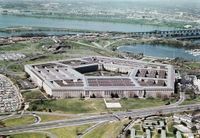On Monday, August 25, 2025, President Donald Trump reignited a wave of debate in Washington by announcing his intention to revert the Department of Defense’s name back to its original moniker: the Department of War. The move, which Trump described as imminent, has stirred both nostalgia and controversy, drawing on the nation’s military past while raising fresh legal and political questions about executive authority.
Trump’s remarks came during a high-profile meeting with South Korean President Lee Jae Myung, as well as a series of public events at the White House. According to Nexstar Media, Trump told reporters, “Pete Hegseth has been incredible with the, as I call it, the Department of War. You know, we call it the Department of Defense, but between us, I think we’re going to change the name.” He added, “You want to know the truth, I think we’re going to have some information on that maybe soon.”
Trump’s rationale for the proposed change hinges on historical precedent and a desire for a more assertive national image. As reported by NewsNation, he said, “It used to be called the Department of War. It had a stronger sound … we are defenders. If you people behind me want to take a little vote and change it back to what it was when we used to win wars all the time, that’s OK with me… We want defense but we want offense too, OK?”
Secretary of Defense Pete Hegseth, who stood with Trump during the Oval Office gathering, replied, “It’s coming soon, sir.” Hegseth later confirmed to the press that plans for the renaming were indeed underway, though he stopped short of providing a definitive timeline.
The Department of War, as Trump and Hegseth both noted, was the original name of the United States’ military bureaucracy, established in 1789 under President George Washington. The name endured through America’s major military victories in World War I and World War II. According to Military Times, Trump argued, “Department of Defense, I don’t want to be defense only. We want defense, but we want offense, too. It used to be called the Department of War and it had a stronger sound. And as you know, we won World War I. We won World War II. We won everything.”
But the name did not survive the sweeping postwar reforms of the late 1940s. In 1947, President Harry Truman oversaw a major reorganization of the U.S. military, combining the Army and Navy under a single Cabinet-level agency. Two years later, Congress officially renamed the department the Department of Defense, reflecting a new era of military strategy and international relations. The National Security Act of 1947, passed by both the House and Senate, also created the post of Secretary of Defense and established the National Security Council and the Central Intelligence Agency. The 1949 amendment further consolidated military command, ending the Cabinet-level status of the Army, Navy, and Air Force secretaries, who were now to report to the Secretary of Defense.
Trump, however, has repeatedly suggested that the shift away from the Department of War title was a concession to “political correctness.” During a June press conference, he claimed, “we became politically correct” and that the old name was abandoned for that reason. He has also referred to Hegseth as “Secretary of War” in both public speeches and on social media, including a post on Truth Social last month.
The president’s push to return to the Department of War name is not without its logistical and legal hurdles. As CBS News reported, Trump voiced skepticism that congressional approval would be necessary for the change, saying, “We’re just going to do it. I’m sure Congress will go along if we need that. I don’t think we even need that.” Nonetheless, legal experts and congressional observers note that the original renaming in 1949 was enacted by Congress, and any attempt to reverse it could be met with objections or even litigation from lawmakers. The National Security Act of 1947, which underpinned the current structure, was a legislative milestone, and altering it through executive action alone may not withstand scrutiny.
Hegseth echoed the president’s enthusiasm but also acknowledged the uncertainty. According to Military Times, he said the change was “coming soon” but did not clarify whether the executive branch could proceed without congressional consent. The ambiguity has left both supporters and critics of the plan speculating about possible legal showdowns on Capitol Hill.
Meanwhile, the Trump administration has been aggressive in reshaping the federal government. Alongside the proposed renaming, Trump has touted increased military recruitment numbers during his second term, even as his administration has cut the federal workforce in other agencies. According to Military Times, the White House has proposed increasing the number of active-duty troops, arguing that a larger military is essential for national security.
The president has also pointed to his diplomatic efforts in global hotspots as evidence of his balanced approach to military strength. Trump has cited his administration’s work in brokering ceasefires between India and Pakistan, Armenia and Azerbaijan, and even between Russia and Ukraine. These efforts have prompted some supporters, including House Speaker Mike Johnson, to suggest that Trump should be considered for the Nobel Peace Prize. Johnson, according to Nexstar Media, made this suggestion while praising Trump’s anti-crime initiatives in Washington, D.C.
Trump’s remarks on Monday came on the heels of signing two executive orders: one targeting the burning of the American flag and another addressing cashless bail in Washington, D.C. The administration has also been working on plans to deploy thousands of National Guard members to Chicago, a move that has drawn sharp criticism from local officials, including Chicago’s mayor and Illinois Governor JB Pritzker, who have denounced the action as federal overreach. In Washington itself, National Guard troops have been authorized to carry service weapons in an effort to combat crime and homelessness, according to the Pentagon.
For many observers, the debate over the department’s name is more than a matter of semantics. The shift from “War” to “Defense” in the late 1940s was emblematic of a broader change in how the United States viewed its role in the world: from a nation mobilizing for total war to one focused on collective security and global alliances. Trump’s desire to return to the older, more forceful name taps into a sense of military tradition and strength, but it also raises questions about the message America wishes to send—both to its own citizens and to the world.
As the administration moves forward with its plans, all eyes will be on the interplay between the executive and legislative branches. Whether the Department of Defense will once again become the Department of War remains to be seen. But one thing is clear: the debate has rekindled a national conversation about history, power, and the symbols that define America’s military identity.





